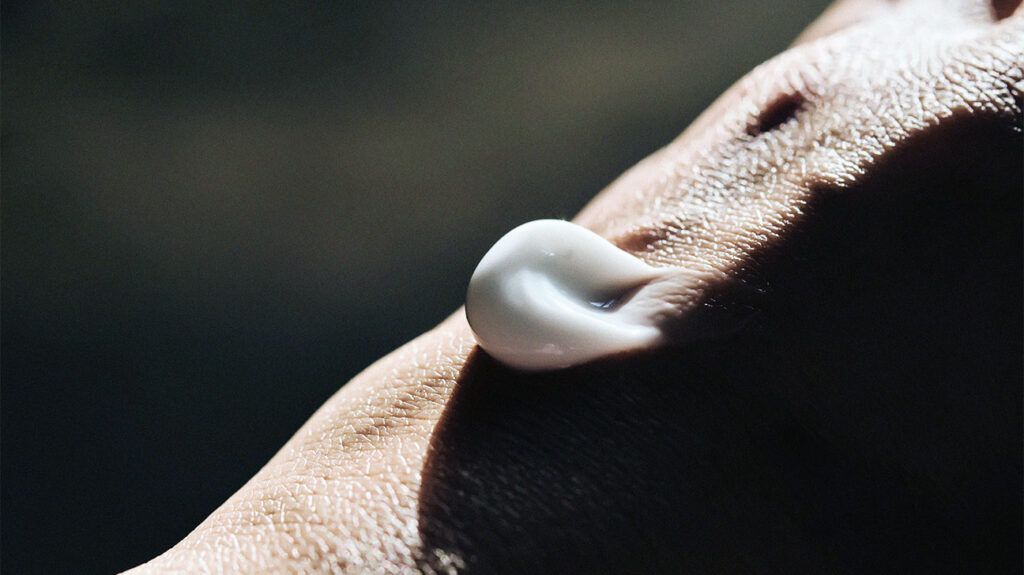People may describe psoriasis pain as itchy, achy, or stinging, with the feeling varying from person to person. Strategies such as using distraction, applying a warm compress, and moisturizing skin can relieve these symptoms.
The degree of pain that psoriasis can cause varies across different forms of the condition. Some forms, such as inverse and pustular psoriasis, tend to be more painful than others.
This article describes what psoriasis pain can feel like, why it might occur, and what people can do to help ease pain.

Research suggests that up to 63% of people with psoriasis experience skin pain.
People with psoriasis can experience pain in different ways. Those who experience skin pain may describe it as:
- aching
- burning
- bursting
- cramping
- cutting
- hot
- itchy
- like a pinprick
- pounding
- searing
- sensitive
- sore
- stinging
- tearing
- tender
- tight
People tend to experience the pain around the areas of the skin where symptoms arise.
Around one in three people with psoriasis also develop a related condition called psoriatic arthritis. This inflammatory condition can cause painful joints that may become stiff or swollen.
Learn more about the symptoms of psoriatic arthritis.
Psoriasis skin pain
Depending on the location of skin damage, certain actions may also be painful. For example, walking could cause pain if a person has damaged skin around their feet or if they are experiencing psoriatic arthritis.
Research links the presence of pain with the following factors:
- severe cases of psoriasis
- sleep problems
- psychological distress
- reduced quality of life
Certain things can also trigger a psoriasis flare, which may cause pain. Common triggers for psoriasis flares include:
- stress
- skin injuries
- weather changes
- illness
Learn 12 more psoriasis triggers.
A 2020 study states that, historically, professionals did not consider psoriasis a painful condition. However, a growing body of research shows that pain is a frequent symptom.
The study authors identified that about 16–63% of people with psoriasis reported skin pain as part of their condition. The study highlights research suggesting that, on average, psoriasis pain is moderate to strong in terms of severity.
Certain types of psoriasis may be more painful than others. However, these types are some of the less common forms of the condition:
- Inverse psoriasis: This form tends to develop within folds of skin, such as the armpits and groin.
- Pustular psoriasis: This form of psoriasis causes small pus-filled blisters.
- Erythrodermic psoriasis: This severe form can cause intense pain and a rash that covers most of the body. It requires immediate treatment.
If someone is experiencing pain related to psoriasis, the following home remedies may help relieve this discomfort:
- Moisturizing the skin: Applying a fragrance-free moisturizer to the skin can soothe and help repair it, locking in moisture. It is best to moisturize within 3 minutes of bathing or washing skin before the skin fully dries.
- Applying a cold compress: This can help relieve itching by cooling the skin, which in turn reduces the activity of nerve cells that send signals to the brain.
- Bathing in lukewarm water: Bathing may loosen scales and help relieve skin pain. However, bathing too much can lead to the skin drying out further. Limit bathing to 15 minutes or less and showers to 5 minutes.
- Focusing on something else: Some people find that doing things to take their mind off the pain, such as watching TV, exercising, or baking, can help.
For some people, itchiness exists alongside psoriasis pain, so relieving itchiness could help reduce pain.
Over-the-counter (OTC) nonsteroidal anti-inflammatory drugs (NSAIDs) like aspirin and ibuprofen (Advil) can help relieve pain for people with psoriatic arthritis. However, NSAIDs and other medications
Currently, there is no cure for psoriasis. However, several treatment options are available to help people manage their symptoms. These include topical medications, light therapy, and systemic medications that work throughout the entire body.
It is best to contact a doctor if a person with psoriasis needs support in managing any pain. A doctor or dermatologist can suggest alternative treatments if OTC or prescription treatments are not currently helping.
People may also contact their doctor if their psoriasis starts getting worse or if they think they might be developing a new form of psoriasis.
Pain is a common feature of psoriasis. It can occur around affected areas of skin or certain joints. People may describe the skin as burning, aching, or tender.
Avoiding triggers and treating the condition are the best ways to limit psoriasis pain. If someone is experiencing a painful flare, they may be able to relieve it with a number of home remedies, such as moisturizing and bathing.
People may speak with a doctor if home remedies do not help skin pain or if their symptoms worsen. A doctor can suggest alternative treatment options.
